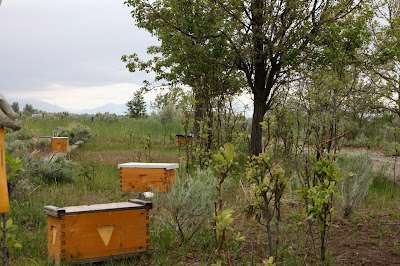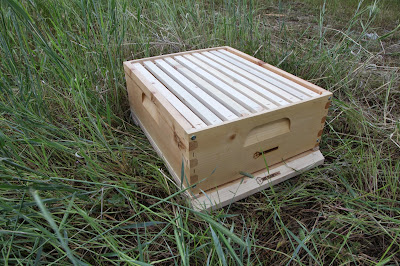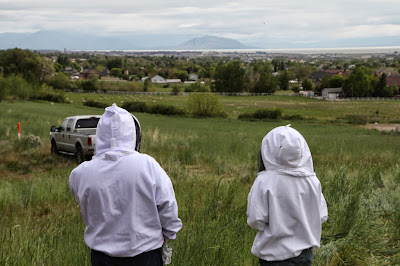As I was working today, my father forwarded me an interesting article from the Associated Press that really caught my attention. The article illustrated just how seriously the issue of the loss of honeybees should be taken.
The Effects of Honeybees on Us
First of all, how do honeybees affect us? To really understand the impact of this terrible occurrence, we have to understand what they do for us. If you were to ask a regular person how a bee impacts them, they probably wouldn't have an adequate answer. Most would answer that bees pollinate things. But do we really appreciate what that actually means?
By definition, pollination is the process of taking the pollen from the anther (male part) of a plant to the stigma (female part) for the intent of reproduction. Virtually all plants are fertilized in this way. Though there are other animals that fertilize plants - beetles, wasps, bats, etc. - none are as important as the honeybee, which depends on pollen as one of its major food sources.

Let's bring things into perspective for a second. Most of our food source is plant matter. And any food that isn't plant matter was fed from plant matter. So, in a very literal sense, our entire food source is dependent on plants. And the plants are dependent on fertilization so that they can continue to grow and spread. A very good friend of mine owns an orchard in Idaho and he depends on the bees to fertilize his trees so that he can feed his family. What if, one day, there was no fertilization going on? We would exhaust our food source very quickly with no way of sustaining it.
Albert Einstein has been attributed as saying: "If the bee disappeared off the face of the globe, then man would only have four years of life left. No more bees, no more pollination, no more plants, no more animals, no more man."
Now, I don't know about you, but Einstein was a very smart man. If he saw the consequences of bee annihilation fifty years ago, then that time has certainly come that we need to pay attention to what is going on around us.
Are We Truly Losing the Honeybee?
The answer to this question is a resounding "YES!" The article from the Associated Press claims that as much as forty percent of the bee population has been lost in the last year!
Let's take a moment to illustrate just how dire this is. As of today, 13 May 2015, the world population was estimated to be about 7,243,000,000 people. That's quite a hefty number! Now, what would happen if we lost forty percent of our population by May 2016. Our population would sit at 4,345,800,000. That's a casualty number of 2,897,200,000! In one year! I don't even want to think of what kind of disaster would have to occur to destroy our population by that magnitude!
Can We Help?
Of course you can! Though the situation is dire, it is certainly not irreversible. Everyone can do their part to help bring back the honeybee. One program that we are pushing for here at Bee Champions is the
"Just Bee-Cause" Hive Sponsorship Program. Even if you can't or have no desire to keep bees, through our program, you can do your part to help create a sustainable solution for the bees. Click on the previous link for more information on the program.
If you are interested in reading the article from the Associated Press, you can read it
here.


































































